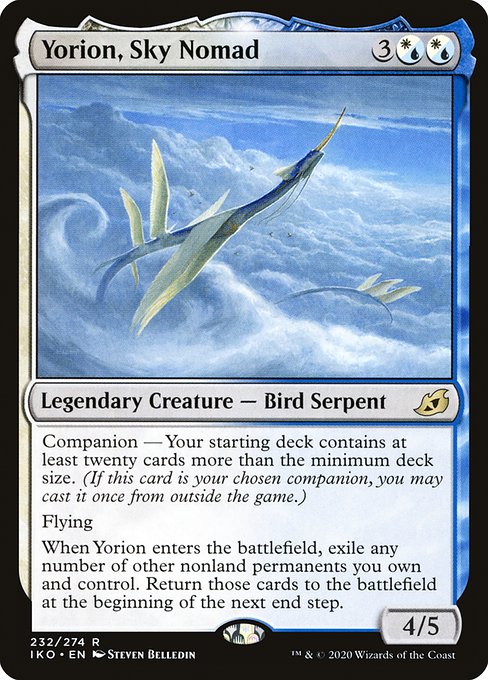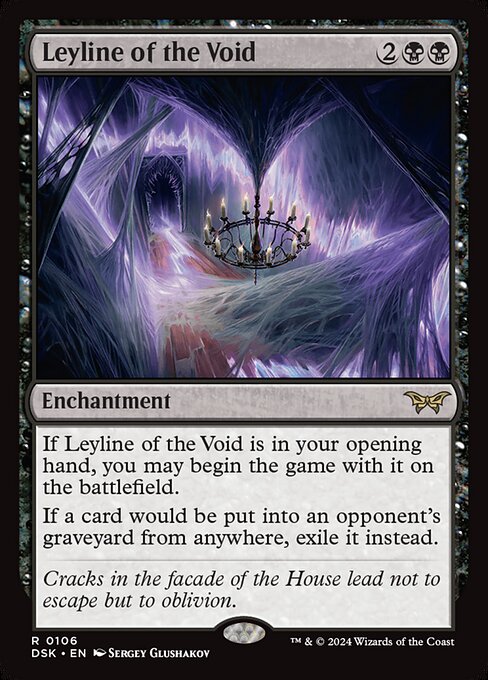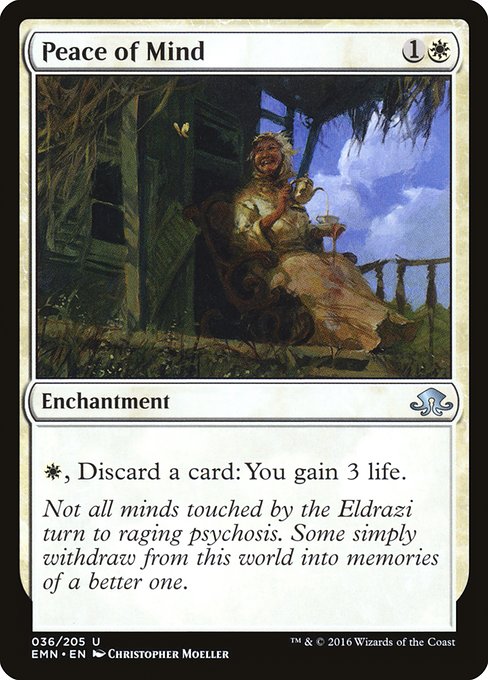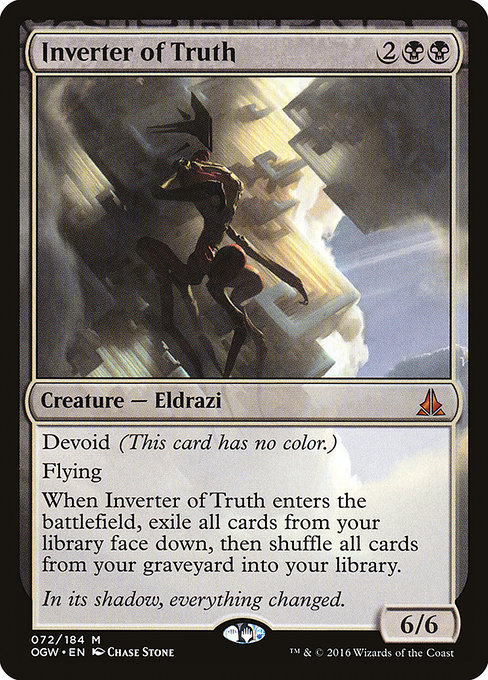Last week, Wizards of the Coast announced changes to currently-available formats on Magic arena with the launch of “Explorer,” “a non-rotating Constructed format using all the tabletop format Pioneer-legal cards available on MTG Arena.”
If you didn’t peruse the announcement, the crux is this: Wizards will be introducing a non-rotating format of all Standard-legal and formerly Standard-legal cards since the advent of Arena, which only traces back as far as Ixalan. This format will be called “Explorer” initially, and will have Pioneer-relevant cards added to it until it mirrors the tabletop Pioneer format. Notably, they intentionally won’t be programming every single card from Pioneer into Arena—their justification is that Vintage on Magic Online doesn’t have “every 2/2 for two”—but will prioritize cards that see play in Pioneer.
That’s a moving target in a format that tends to be in flux, but it makes sense in terms of code hours. I suppose, in theory, someone may be disappointed that their dubious sideboard tech of Carnival Hellsteed won’t show up on Arena, but with a robust enough reprint strategy, we should have at least a tournament-prep-level version of the format available on our phones and tablets.

As stated, all of this will be a multi-year process, with Wizards potentially managing two banned lists and juggling two slightly differentiated formats in the meantime. That may be a blessing; the labor hours cost and the audience confusion that arise may motivate Wizards to produce a digital Pioneer format with due speed. They’ve also stated that they won’t be balancing cards for digital formats in Explorer/Pioneer. This means no Alchemy-style shenanigans and no Jumpstart: Historic Horizons digital-only cards. The goal seems to be a format where you can play it in paper and can seamlessly replicate it on Arena, and vice-versa.
With this announcement, we’re one step closer to on-demand Pioneer matches; with the return of the Pro Tour, we’re one step closer to Pioneer fully breaking out to match other popular formats. Personally, I’m over the moon about this: I’m a big fan of Pioneer and this will give me the opportunity to playtest for Pioneer tournaments without having to purchase physical cards immediately (drafting on Arena has left me with a pile of unusable wildcards). It will allow me to pick up matches without having to schedule meetups, and opens up the possibility of older formats on Arena eventually.
For folks who are just getting into the format, though, it’s daunting. There’s a full decade of Pioneer cards now (2012-2022), which is more than Modern had when it initially launched (2003-2011). If you’ve not been drafting for the last couple of years on Arena, you may not have the wildcards to spare to recreate Pioneer decks from scratch.
So this is a surface level look at the format and what we can expect to see when Explorer goes live—and what we can hope for in the months to come. Pioneer has great depth, with almost 9,000 cards legal in the format, but it’ll be some time before those cards are programmed into Arena. In the meantime, we can start laying the foundation for Pioneer success based on what we can guarantee is coming or already printed to the platform.

As ever, the chokepoint is budgetary, although with the advent of Arena, that budget can either be cash or wildcards. With Wizards recently announcing that the pipeline of one to the other is a bit more direct—offering a bundle of wildcards for USD49.99—it’s possible to set a budget baseline. There was a significant amount of sticker shock at that wildcard announcement: while the math essentially checks out, turning fifty bucks into a mana base certainly gives some players second thoughts. Personally, I’m able to build paper Pioneer decks for the same reason I can build Arena Explorer decks; I love drafting and have boxes of decks and satchels of wildcards from evenings spent climbing the Limited ladder. I’m aware, though, that this isn’t an option for everyone, so we’ll cast a wide net.
For players just getting into the format, there’s a budget aggro deck awaiting you, no matter your preferred color. Red Burn, mono-black, mono-Green Stompy, Thalia-fueled mono-White, even a Blue Skies archetype are all decent places to dip your toe into the format without committing to a full plunge. Set aside cash in your budget and earmark four wildcards for Mutavault, which sees heavy play. As always, buy or craft real estate: without fetches, the shocklands and the Kaldheim/Zendikar Pathways are the best options for multicolored decks. The boat on shocklands has sailed, but you can still catch up to it for any color combinations you’re strongly considering playing. Painlands, currently unavailable on Arena, are also a solid pickup, although many decks eschew the full playset.
Once your mana base is solid, Fable of the Mirror-Breaker sees significant play, from Winota, Joiner of Forces decks to Greasefang, Okiba Boss Combo, so picking up a set now is an easy call for the frugal. Thoughtseize is a pillar of any format it appears in, so that should be a priority. It may be tempting to pick up a Pioneer Challenger deck, and you absolutely should if the archetype interests you, but the reprints are relatively parsimonious and you’d be better off using that chunk of cash on singles.

For players who’ve been playing a bit longer, the sideboard is a good place to start building your Pioneer staples. Pioneer’s range coincides with Wizards printing a fair amount of hate cards, from Leyline of the Void to Kozilek’s Return to Heroic Intervention. Blast Zone, Grafdigger’s Cage, Ratchet Bomb—the colorless sideboard cards are as potent as they are universal, and should be prioritized if you’re light on wildcards. The Gitrog Monster can only be played in a couple of decks; your Slitherbore Pathways can be played in every G/B/X deck until the death of the game.
The best way to plan ahead is to analyze what’s missing. On Arena, there’s no Kalitas, Traitor of Ghet for Rakdos, no Thing in the Ice for Izzet, no Eidolon of the Great Revel or Searing Blood for Burn, no Tasigur, the Golden Fang, Goblin Piledriver, or Nykthos, Shrine to Nyx. These, I imagine, will be Wizards’ top priority if they want the online metagame to mirror the paper.
What I imagine will be the top deck—Winota combo—is missing its redundant but critical Elvish Mystic and linchpin Voice of Resurgence. Wizards gave us some top picks from Kaladesh and Amonkhet blocks via the Remastered sets, and they’ve seeded some Pioneer staples in various Historic Anthologies, but a quick list of crucial cards would look something like this:
Return to Ravnica block: Boros Charm, Boros Reckoner, Abrupt Decay, Azorius Charm, Cloudfin Raptor, Crypt Ghast, Crypt Incursion, Detention Sphere, Dreadbore, Hidden Strings, Izzet Charm, Slaughter Games, Thespian’s Stage, Voice of Resurgence
Theros block: Ashiok, Nightmare Weaver, Brimaz, King of Oreskos, Chained to the Rocks, Courser of Kruphix, Destructive Revelry, Eidolon of Blossoms, Eidolon of the Great Revel, Eidolon of Rhetoric, Mana Confluence, Nykthos, Shrine to Nyx, Searing Blood, Sylvan Caryatid
Khans of Tarkir block: Deflecting Palm, Dig Through Time, Dragonlord Ojutai, Dragonlord Silumgar, Monastery Swiftspear, Rally the Ancestors, Surrak Dragonclaw, Tasigur, the Golden Fang, Treasure Cruise, Warden of the First Tree, Wild Slash
Battle for Zendikar block: Bring to Light, Kalitas, Traitor of Ghet, Kozilek’s Return, Needle Spires, Nissa, Voice of Zendikar, Oath of Nissa, Painful Truths, Radiant Flames, Reflector Mage, Thought-Knot Seer, Wandering Fumarole, Zulaport Cutthroat
Shadows Over Innistrad block: Collective Brutality, Collective Defiance, Duskwatch Recruiter, Emrakul, the Promised End, Gisela, the Broken Blade, Grim Flayer, Liliana, the Last Hope, Mausoleum Wanderer, Nahiri, the Harbinger, Olivia, Mobilized for War, Relentless Dead, Selfless Spirit, Spell Queller, Thalia, Heretic Cathar, Tireless Tracker, Traverse the Ulvenwald
Core Sets: Battlefield Forge, Birds of Paradise, Caves of Koilos, Darksteel Citadel, Day’s Undoing, Elvish Mystic, Ensoul Artifact, Goblin Piledriver, Goblin Rabblemaster, Jace, Vryn’s Prodigy, Llanowar Wastes, Mutavault, Nissa, Vastwood Seer, Shivan Reef, Urborg, Tomb of Yawgmoth, Yavimaya Coast
From this lengthy list, it’s pretty easy to anticipate what Wizards will prioritize reprinting. Ensoul Artifact, for example, is currently missing both its namesake card and primary target Darksteel Citadel, and I can’t imagine Mutavault isn’t on the first Explorer print list. Bring to Light, Hidden Strings combo, Azorius Spirits—these are all tier decks in Pioneer that can’t be recreated in Explorer at the moment.
It’s a more interesting exercise to think about what’s likely to be delayed or left out entirely of eventual Explorer reprints. For example, Deathrite Shaman is legal in Pioneer, but doesn’t see much play, due to the absence of the fetchlands. Is it prioritized for reprinting? If we hit a critical mass of Fabled Passage effects, does it get added to the reprint list? Peace of Mind is not on anyone’s radar, but what if a Can’t Stay Away combo deck pops into existence with a new card from The Brothers’ War?

Wizards is on the horns of a dilemma here: they can squander hours of coding and testing on reprinting a thousand or so cards to Explorer—the totality of cards currently missing from Arena—and have them languish, unplayed and clogging up our user interface. Alternately, they can print selectively and potentially leave out crucial pieces of unpredicted decks.
Neither solution is ideal, but they have run successful pilot programs in Kaladesh and Amonkhet Remastered. While there are still missing cards, some of which could have mild relevance in Pioneer—Gideon’s Defeat, Hostile Desert, Dreamstealer, Battle at the Bridge, Greenwheel Liberator, Fleetwheel Cruiser, Faith of the Devoted, Kefnet’s Last Word, a handful of others—the bulk of the cards left out were just that: bulk rares and draft chaff.

As Arena buoys Pioneer’s popularity, I do expect the natural order of things to lead to bans. I may just still be stinging from the loss of Inverter of Truth Combo, my former Pioneer deck, but I can’t imagine Wizards doesn’t have their sights on Winota, who’s part Collected Company and part Black Lotus. Notably, the deck is mostly cards from Ixalan onwards, with only Elvish Mystic standing out as an irreplaceable component and Voice of Resurgence likely on the short list for reprints.
Which is to say: as Explorer launches, expect to see a field full of Winotas and then, some months in the future, a field completely without Winotas. With tournaments ramping back up and the Pro Tour system returning with a focus on Pioneer, the announcement of Explorer wasn’t precisely a surprise, but it was a welcome update. Pioneer is a strategically rich format with fewer than two dozen banned cards, so the field (albeit not the Field) is wide-open, even if the card pool is a touch restricted starting out.
A lifelong resident of the Carolinas and a graduate of the University of North Carolina, Rob has played Magic since he picked a Darkling Stalker up off the soccer field at summer camp. He works for nonprofits as an educational strategies developer and, in his off-hours, enjoys writing fiction, playing games, and exploring new beers.

